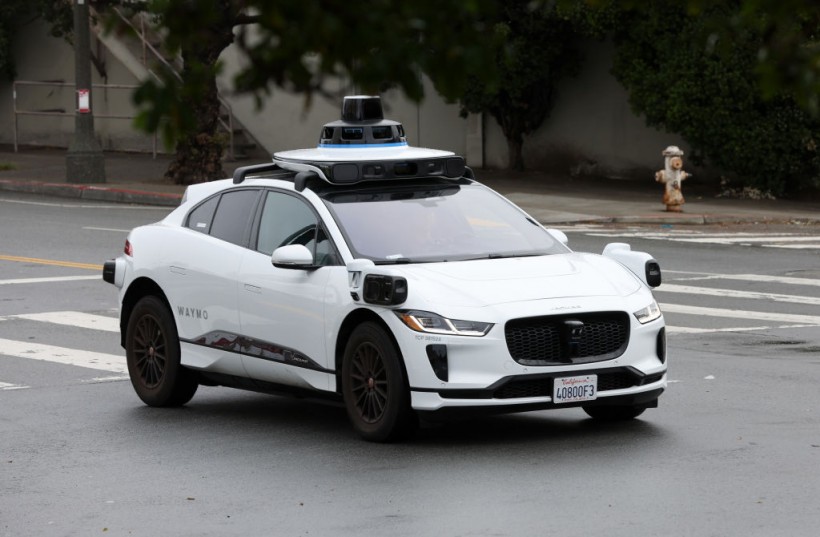On November 18, the California Public Utilities Commission (CPUC) granted the Alphabet-owned Waymo a permit to participate in a driverless program that lets self-driving car companies transport passengers in test AVs without anyone behind the wheel. During these rides in test AVs, Waymo will not be charging passengers.
But they are one step closer to charging fully driverless car rides in San Francisco. The permit represents a milestone for autonomous vehicles and expands their potential availability to more California residents and increases opportunities for public engagement during the pilot test.

A Waymo autonomous vehicle drives along Masonic Avenue on April 11, 2022 in San Francisco, California. San Francisco is serving as testing grounds for autonomous vehicles with Waymo, a Google subsidiary and Cruise, a subsidiary of General Motors, logging millions of test miles throughout San Francisco in 2021.
Places Where Waymo Is Available
Waymo is planning to begin offering fully driverless rides in the coming weeks after receiving the permit. They are the second company to participate in the Driverless Permit program of CPUC, with Cruise as the first company to do so.
According to Engadget, Waymo's permit allows them to offer driverless rides throughout San Francisco, particularly in portions of Daly City, some parts of Los Altos, Los Altos Hills, Mountain View, Palo Alto, and Sunnyvale.
Moreover, they are also allowed to go as fast as 65 miles per hour but are prohibited to operate 24/7. Waymo told Engadget that it will begin offering free rides without a driver to select members of the public in the coming weeks.
The company recently received authorization from the California Department of Motor Vehicles to charge fully autonomous rides. But they still have to secure a Driverless Deployment permit after CPUC's Driverless Pilot program to start doing so. The agency has also given Cruise a deployment permit for their robotaxis in June, after almost one year since it was permitted to give free rides to the public.
Waymo will also unlikely be allowed to operate during times of heavy fog and rain during its deployment permit, like Cruise. Robotaxi companies have to find a way to overcome bad weather for their autonomous vehicles to still perform at that time.
The company recently announced that its self-riding car is using its latest sensor arrays to create real-time weather maps of Phoenix and San Francisco. They are using data gathered from improving their Driver AI's ability to handle rough weather to better understand the limits of their vehicles.
READ ALSO: Self-driving Cars May Not Be as Safe as Conventional Cars [STUDY]
Waymo Operating in Phoenix First Before in San Francisco
Waymo is a self-driving car project of Google in 2009 with over 700 vehicles in its fleet, which are made up of a mix of Jaguar I-PACE EVs, Chrysler Pacific Hybrid minivans, and Class 8 trucks.
They have been operating in Phoenix way before in San Francisco, per The Robot Report. It has been offering rides in Phoenix and the Phoenix suburbs since 2017 and will soon be opening up rider-only taxi rides in downtown Phoenix to the public. They can give rides from downtown Phoenix to the Phoenix airport.
The company has also been giving robotaxi rides in San Francisco since 2021. Aside from Waymo, the self-driving unit of GM called Cruise is also given the driverless pilot permit from CPUC. Both car companies received their permits at the same time, although Cruise announced theirs at an earlier time last week and said it is offering rides to its employees in the city.
Cruise mainly operates its self-driving car services between 10 PM and 6 AM as part of the original restrictions of its deployment permit. They hope to offer rides in the daytime to the public soon.
RELATED ARTICLE: How Data Annotation Helps AI in Self-Driving Cars See the Physical World
Check out more news and information on Self-Driving Car in Science Times.














